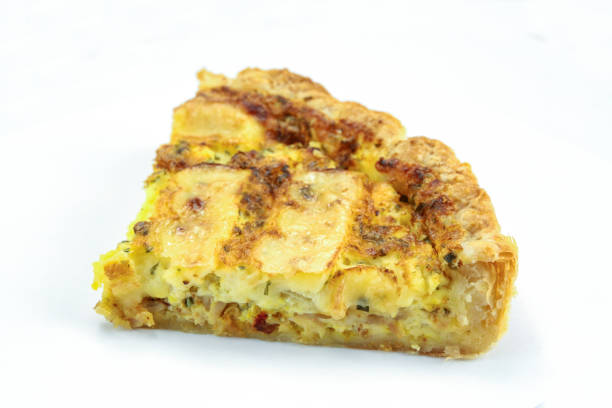Introduction to Biscuit Breakfast Casserole
Biscuit breakfast casseroles, originating from the Southern United States, are a staple in hearty and comforting morning meals. Perfect for lazy weekends or festive brunches, these dishes combine fluffy biscuits with rich ingredients like eggs, cheese, and optional meats or vegetables, all baked to a golden delight. This versatile dish can be prepared ahead, ideal for busy mornings or entertaining. Over time, the simple biscuit and gravy concept has evolved into elaborate casseroles, allowing customization to suit any taste. Now popular nationwide, a biscuit breakfast casserole is the perfect way to elevate your breakfast routine and please any palate.
Essential Ingredients for a Biscuit Breakfast Casserole
Creating the perfect biscuit breakfast casserole involves a harmonious blend of essential ingredients that contribute to its flavor, texture, and overall heartiness. Here are the key components:
-
Biscuits:
The base of the casserole, biscuits should be fluffy and buttery. You can use pre-made refrigerated biscuit dough for convenience, or make your own buttermilk biscuits for a more homemade touch. The biscuits are typically quartered or crumbled to form a substantial, absorbent layer.
-
Eggs:
Eggs are crucial as they bind all the ingredients together, creating a custard-like texture when baked. Whisk the eggs thoroughly with milk or cream to ensure the casserole is moist and tender.
-
Milk or Cream:
Adding milk or cream to the eggs softens the texture of the casserole, making it creamy and rich. Full-fat options tend to yield the best results, enhancing the luxurious feel of the dish.
-
Cheese:
Cheese adds depth and a gooey texture that is irresistible in any breakfast casserole. Popular choices include sharp cheddar for a bite, Monterey Jack for mildness, or a mix of both. You can also experiment with pepper jack or Gouda for a different flavor profile.
-
Proteins:
- Meat adds savory notes and substance to the casserole. Commonly used meats include cooked sausage, bacon, or ham. For a vegetarian option, substitute meats with plant-based proteins like tofu or a meat substitute, ensuring they are pre-cooked or suitable for baking.
-
Vegetables:
Vegetables not only add color and nutrition but also enhance the flavor and texture. Bell peppers, onions, mushrooms, and spinach are popular choices. Ensure vegetables are pre-cooked to remove excess moisture, which could make the casserole soggy.
Seasonings:
Salt, pepper, and herbs like parsley, chives, or thyme add layers of flavor. You can also include spices such as paprika or a pinch of cayenne for a subtle heat.
Each ingredient plays a pivotal role in the casserole’s structure and taste, making it a customizable and delicious option for any breakfast or brunch gathering.
Step-by-Step Cooking Guide Biscuit Breakfast Casserole
Preparing a biscuit breakfast casserole is a straightforward process that yields a delicious and satisfying meal. Follow these simple steps to create your own masterpiece:
-
Preheat Your Oven:
Begin by preheating your oven to the temperature specified in your recipe, usually around 350°F (175°C). This ensures that your casserole bakes evenly and thoroughly.
-
Prepare Your Ingredients FOR Biscuit Breakfast Casserole:
Gather all the necessary ingredients and prepare them as directed. This includes chopping vegetables, grating cheese, and cooking any meats that require pre-cooking.
-
Grease Your Baking Biscuit Breakfast Casserole:
Lightly grease a baking dish with butter or cooking spray to prevent the casserole from sticking during baking.
- Assemble Your Layers:
Start by placing a layer of quartered or crumbled biscuits on the bottom of the greased baking dish. Next, add your cooked meats, vegetables, and cheese, distributing them evenly over the biscuits.
- Whisk Your Egg Mixture:
In a separate bowl, whisk together the eggs, milk or cream, and any desired seasonings. Pour the egg mixture evenly over the biscuit and filling layers, ensuring that all ingredients are coated.
-
Let It Soak:
Allow the casserole to sit for a few minutes, allowing the biscuits to absorb the egg mixture. This ensures that the casserole bakes evenly and results in a moist, tender texture.
-
Bake Until Golden Brown:
Place the assembled casserole in the preheated oven and bake according to your recipe’s instructions, typically for around 30 to 40 minutes, or until the top is golden brown and the center is set.
-
Check for Doneness:
To ensure the casserole is fully cooked, insert a toothpick into the center. If it comes out clean or with just a few moist crumbs, the casserole is ready.
-
Let It Rest:
Once baked, remove the casserole from the oven and let it rest for a few minutes before serving. This allows the flavors to meld and makes it easier to slice and serve.
-
Serve and Enjoy:
Slice the casserole into squares or wedges and serve hot, accompanied by your favorite breakfast sides such as fresh fruit, a green salad, or crispy hash browns.
Following these simple steps will guarantee a flavorful and satisfying biscuit breakfast casserole that’s sure to become a breakfast favorite for years to come.

